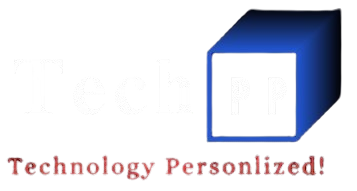Managing credit efficiently is essential for maintaining healthy cash flow and customer relationships. The credit management process involves several steps — from evaluating customer creditworthiness to ensuring timely payments. However, many organizations still handle this process manually, leading to delays, errors, and miscommunication between teams.
This is where an editorial workflow approach can make a big difference. Originally designed for publishing teams, editorial workflows focus on structured collaboration, approvals, and version control. When applied to credit management, they bring clarity, accountability, and automation to what was once a tedious, manual routine.
The Importance of a Strong Credit Management Process
A well-structured credit management process helps businesses protect their financial health. It ensures that customers are granted appropriate credit limits, invoices are tracked, and overdue accounts are handled promptly. The main goals include:
- Reducing bad debts and financial risks
- Maintaining positive customer relationships
- Improving cash flow and liquidity
- Ensuring compliance and documentation
Despite its importance, many organizations still use spreadsheets, emails, and manual follow-ups to manage credits. This often causes information silos, missed deadlines, and inconsistent communication between sales, finance, and collections teams.
The Challenge: Manual Workflows and Delays
In a manual credit management setup, several problems occur frequently:
- Lack of visibility: Different teams handle parts of the process separately, and no one has a complete picture of the status.
- Inconsistent follow-ups: Without automated reminders, pending approvals and overdue invoices can easily slip through the cracks.
- Human errors: Manual data entry and approval chains increase the chance of mistakes.
- Poor accountability: It’s difficult to track who is responsible for each stage, leading to confusion and blame when payments are delayed.
These challenges not only slow down operations but also affect customer trust and financial stability.
How Editorial Workflow Automation Solves These Issues
An editorial workflow is a structured series of steps that ensures every piece of work — in this case, every credit request or invoice — moves smoothly from one stage to the next. When you automate this workflow using digital tools like Cflow, each task is assigned, tracked, and approved systematically.
Here’s how editorial workflow automation enhances the credit management process:
1. Defined Stages and Roles
Just like a publishing team has writers, editors, and approvers, the credit management team can define clear roles — credit analyst, finance manager, and collections officer. Each stage in the workflow (credit check, approval, invoicing, payment follow-up) is assigned to the right person.
2. Automated Approvals
Instead of sending emails or waiting for manual sign-offs, the system automatically routes requests to the next approver. Notifications and reminders ensure there are no delays in approvals.
3. Centralized Data and Documentation
All customer data, invoices, credit terms, and approval histories are stored in a single platform. This ensures transparency and easy retrieval during audits or customer reviews.
4. Reduced Errors Through Automation
Automation minimizes manual data entry and ensures that validation rules (for example, credit limit checks) are consistently applied. This reduces financial errors and helps maintain data accuracy.
5. Improved Collaboration
An editorial workflow connects multiple teams — sales, finance, and collections — through one collaborative platform. Everyone can see task progress, pending actions, and communication history, improving team coordination.
6. Better Monitoring and Insights
Workflow automation provides dashboards and reports that track metrics such as average approval time, outstanding payments, and customer risk levels. Managers can quickly identify bottlenecks and improve efficiency.
Practical Example: Credit Approval Workflow
Let’s look at how this would work in practice:
- Request Creation: The sales team submits a new customer credit request through a digital form.
- Credit Check: The system automatically gathers the customer’s payment history and financial score.
- Review and Approval: The finance manager receives a task notification and approves or rejects the request.
- Invoice Generation: Upon approval, the invoicing team prepares and sends the invoice to the customer.
- Payment Follow-Up: Automated reminders are triggered before and after the due date.
- Closure and Reporting: Once payment is received, the workflow marks the request as completed and stores the transaction details for future reference.
Each step is automated, reducing manual effort and improving speed.
Benefits of Using Editorial Workflow Automation in Credit Management
Implementing editorial workflow automation can lead to significant improvements across the organization:
- Faster credit approvals: Automated routing and notifications cut approval times drastically.
- Higher accuracy: Rules-based validations eliminate calculation and data entry errors.
- Improved transparency: Every team member can track progress and accountability.
- Enhanced compliance: Digital records provide audit trails for every transaction.
- Better cash flow: Timely approvals and reminders ensure quicker payments.
Over time, these benefits translate into stronger financial performance and reduced operational risk.
Why Cflow Is Ideal for This Transformation
Cflow is a no-code workflow automation platform that allows businesses to design and automate their own processes easily. With intuitive drag-and-drop features, teams can build credit approval workflows, integrate with accounting software, and generate real-time reports — all without writing a single line of code.
Its visual workflow builder and AI-powered suggestions make it simple for finance teams to identify bottlenecks and optimize performance. Moreover, Cflow ensures secure, role-based access control, which is essential when handling sensitive financial information.
Conclusion
A streamlined credit management process is essential for any business that wants to maintain healthy cash flow and minimize financial risk. By adopting an editorial workflow approach and automating it with a tool like Cflow, organizations can turn a time-consuming manual task into a smooth, efficient, and error-free process.
Workflow automation brings structure, visibility, and speed — ensuring that every credit decision is timely, transparent, and backed by data. In the modern business world, that’s not just a process improvement — it’s a competitive advantage.


